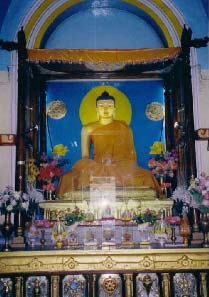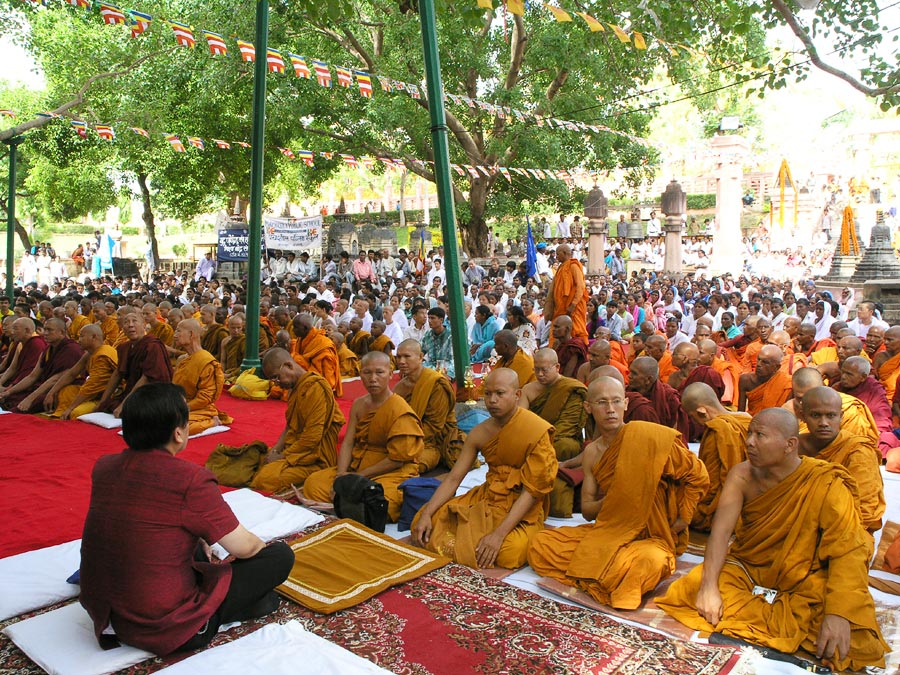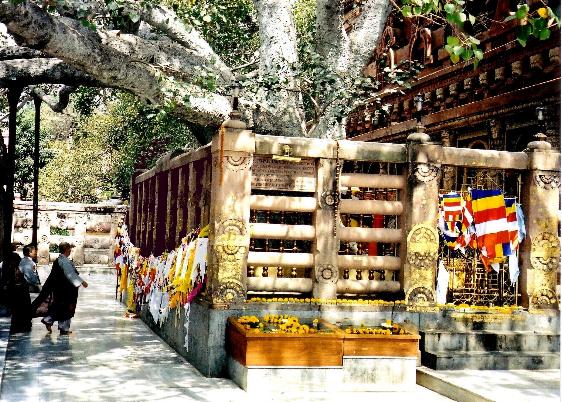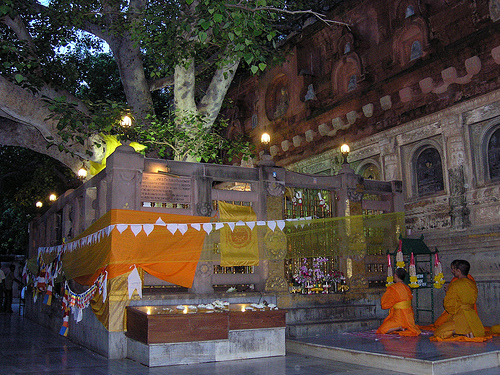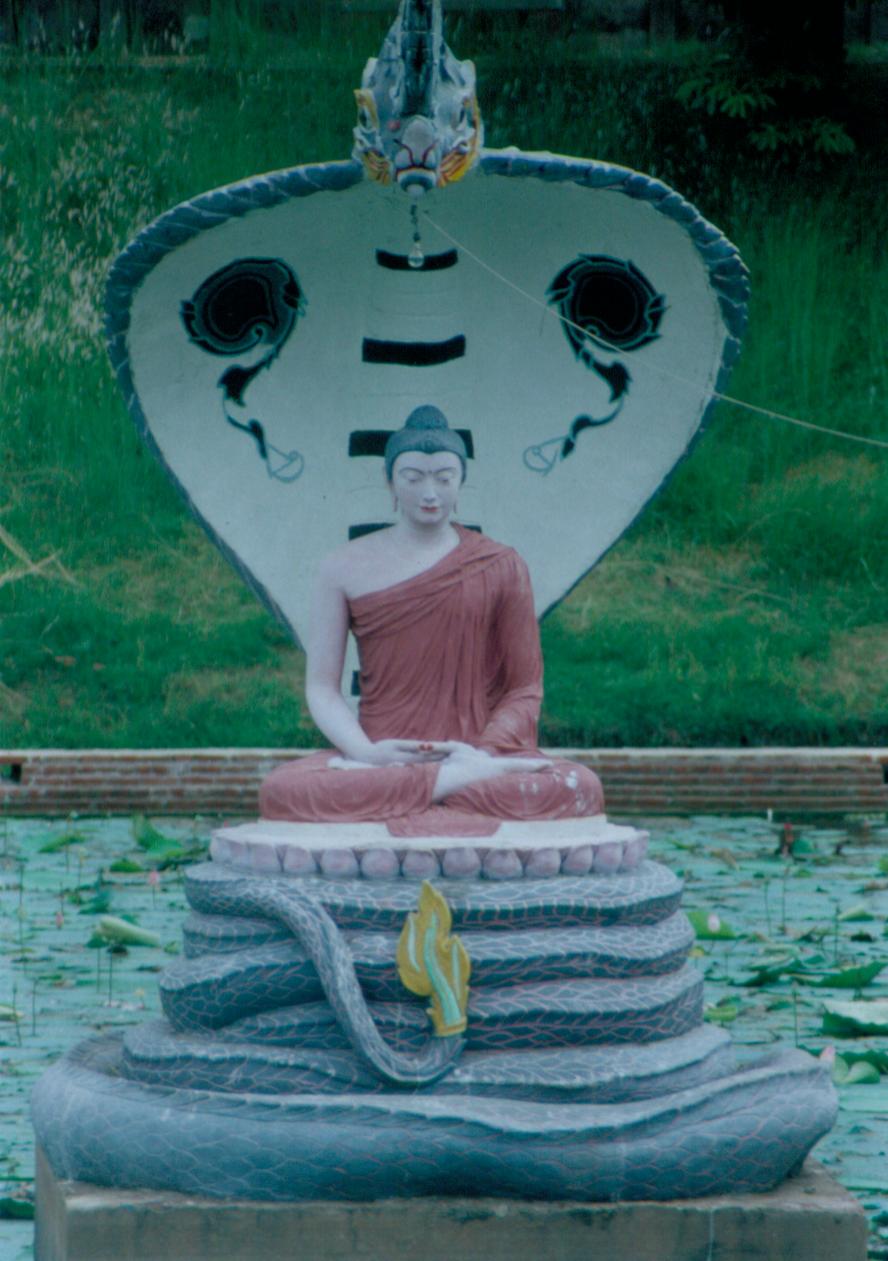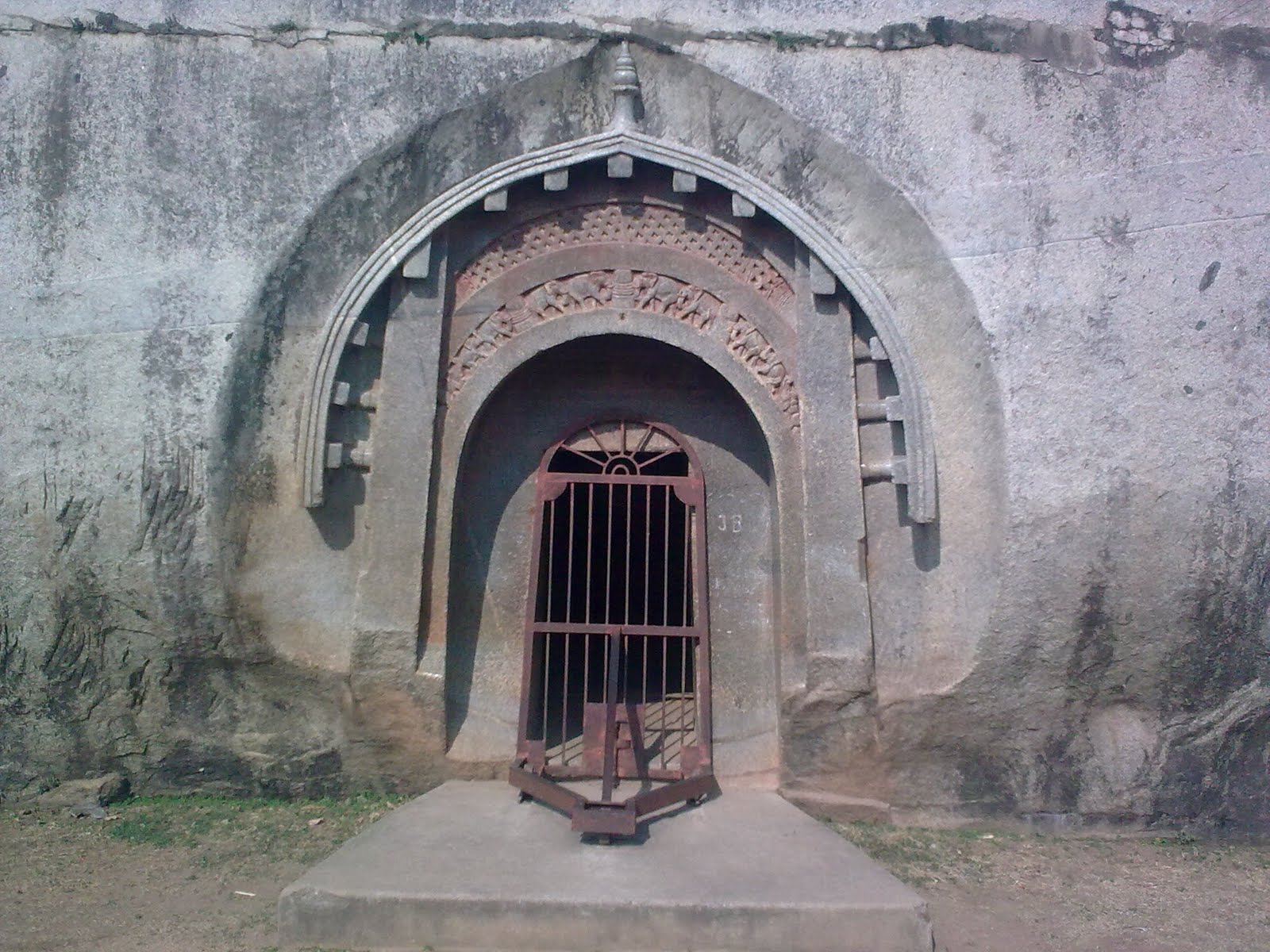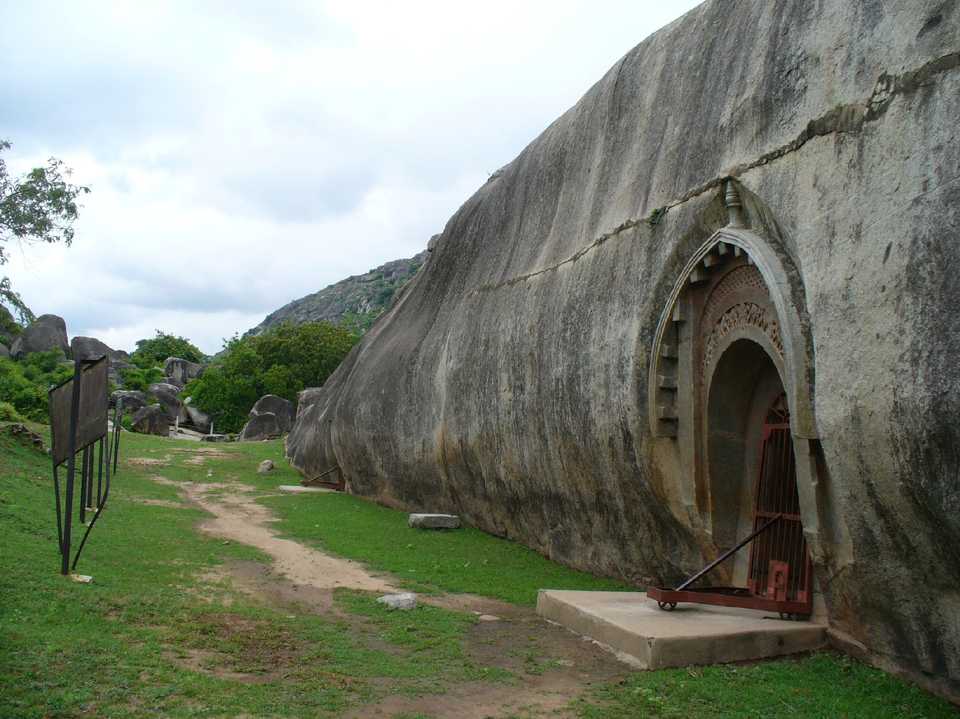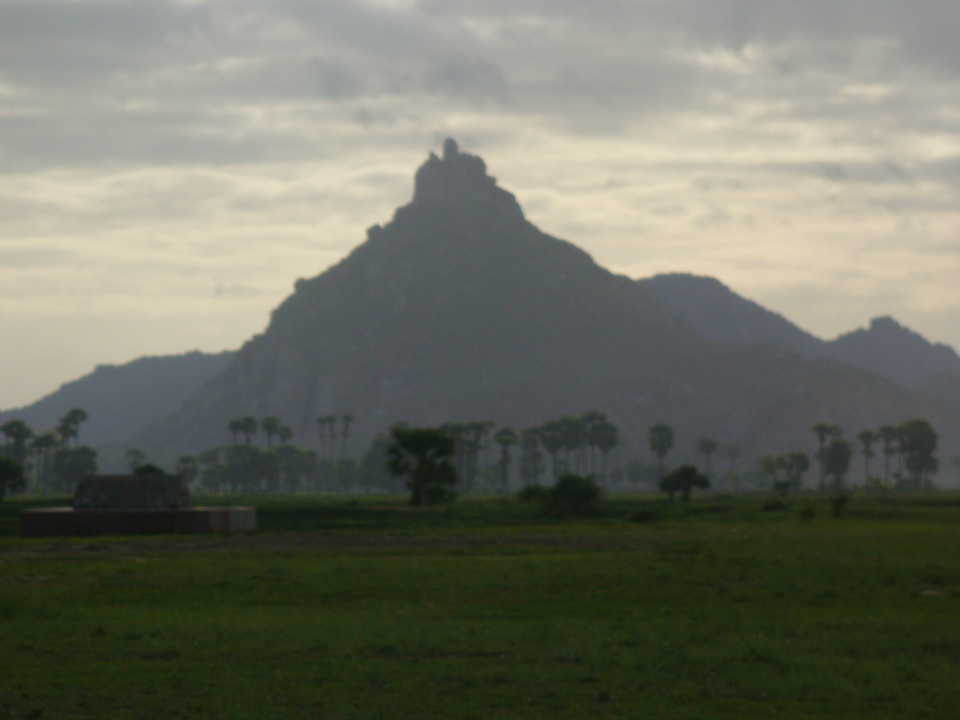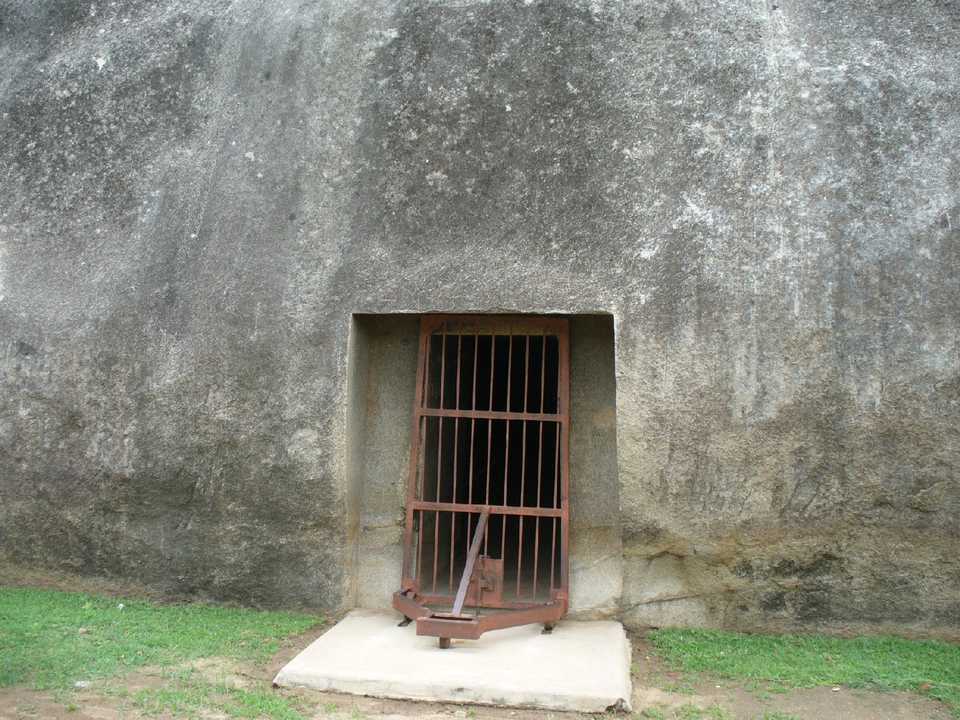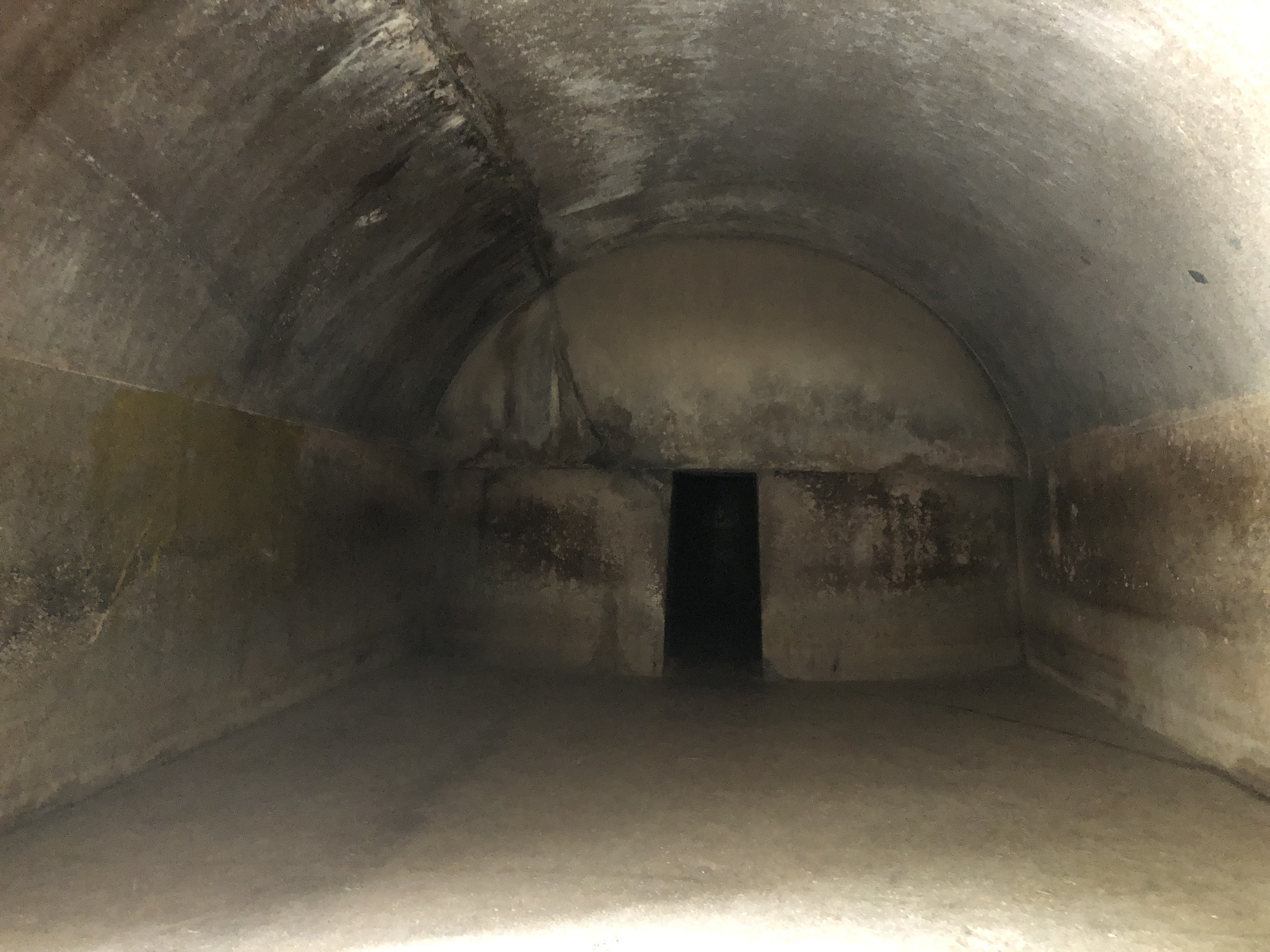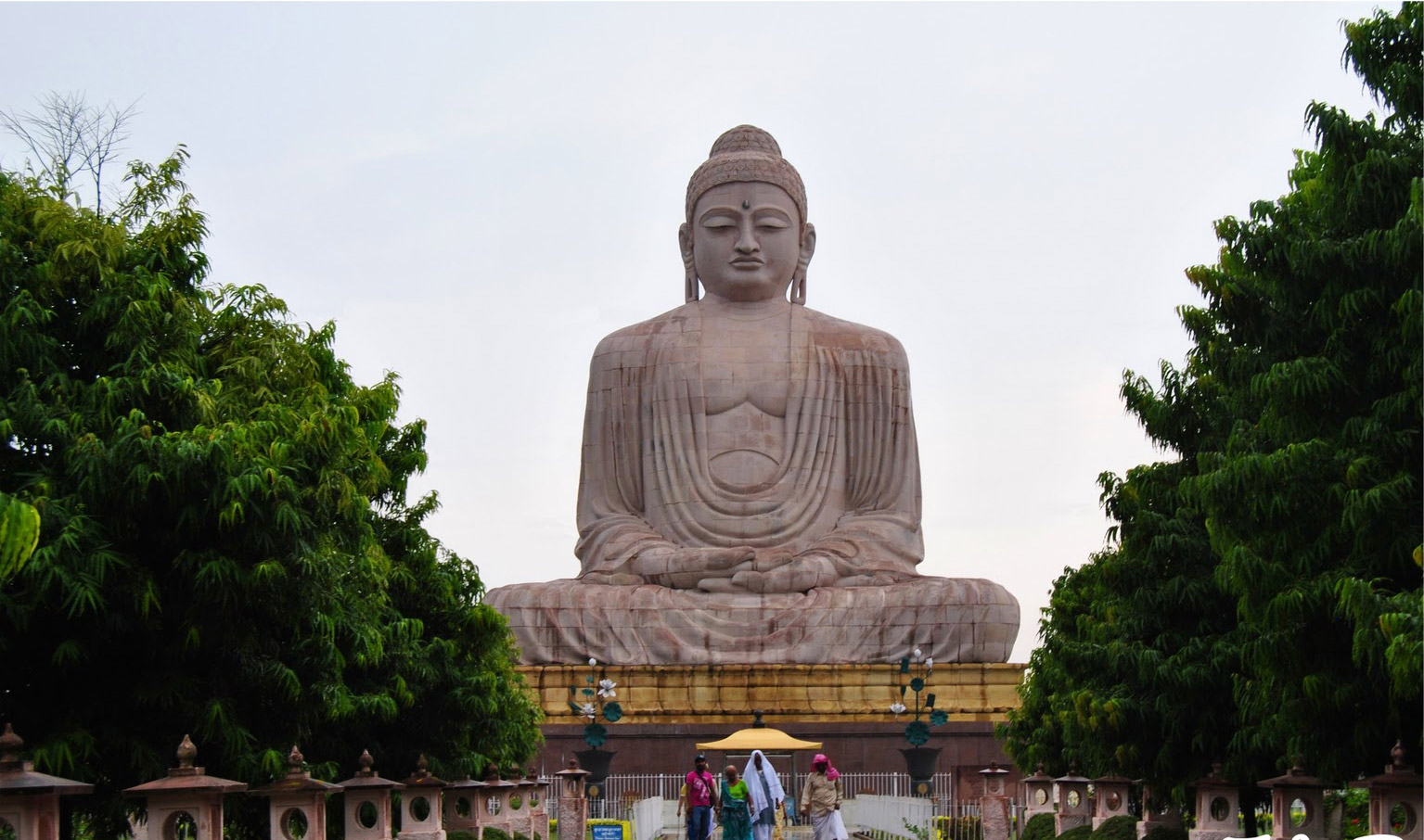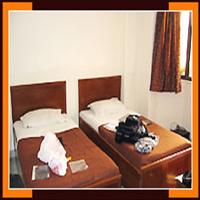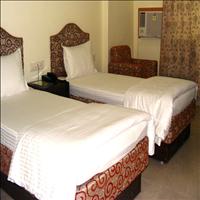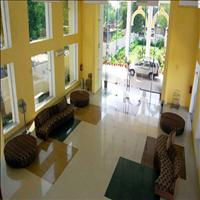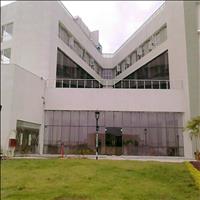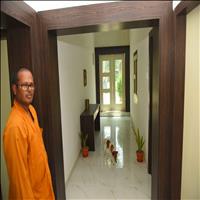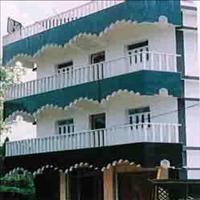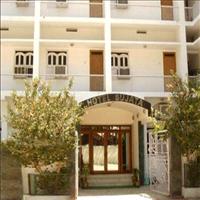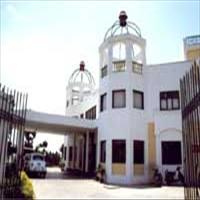Bodhgaya
The Place of Enlightenment
General Information
Common Name: -
Other Name: Bodh Gaya, Buddha Gaya, District: Gaya, State: Bihar, India
Area: 0
Languages Spoken: Hindi, English and Maithili
Long Distance Code: +91-631
Importance: Lord Buddha attained enlightenment here
Best Time to Visit: October to March and During May; for the Budhha Purnima celebrations
International Access: Gaya international Airport
Description
Nearly 3000 years ago this was the place that transformed Prince Siddhartha to Lord Buddha giving him enlightenment and thus a birth of new religion, Buddhism. After experiencing severe austerities for six years, Prince Siddhartha realized the futility of such penances to find the ultimate truth for salvation of Human kind. He had wandered enough. He chose to sit under a Bodhi tree in meditation until he found out the true path to salvation. Not caring of his physical needs, he meditated for 45 days and it was then that he was enlightened and the realization of the cause of sorrow and path of salvation dawned upon him. Since then Bodhgaya has become the place where the story of Prince Siddhartha ends and saga of the world's greatest teacher begins. Bodhgaya thus continues to be the site of utmost importance to the Buddhists and apart from being a vital Buddhist centre also happens to be an important archaeological site. People from far and wide come here to pay their homage to the great world teacher. They come here to learn more about Buddhism and its doctrines and also to learn the art of meditation. The focal point of Bodhgaya is the Mahabodhi Temple. This 50 meter high temple was originally built by Emperor Ashok in the 3rd century B.C. after he became the follower of Buddhism. The temple was destroyed and resurrected many a times. But the present structure is said to be around 10 centuries old. This temple complex has the famous Bodhi tree under which Buddha attained enlightenment. The original tree died long back. A sapling of the original tree was taken to Sri Lanka by the daughter of Ashok, Sanghamitra. She got it planted in Sri Lanka. The present tree at Bodhgaya is the sapling of that tree in Sri Lanka. Emperor Ashoka also erected a diamond throne shrine at this spot with a canopy supported by four pillars over a stone representation of the Vajrasana, the Seat of Enlightenment. Inside the temple there is a colossal image of the Buddha in the Bhumisparsha Mudra; Lord is shown touching the ground. The temple is surrounded by a small pillars and delicate lattice work.Apart from this main site the small town today has many monasteries built by various Asian countries in their own architectural styles. All these monasteries are meant for learning Buddhism and are patronized by the people from those particular countries.Location
Bodhgaya is a small village in the eastern state of Bihar, is situated near the Hindu pilgrimage centre of Gaya. Around 11 kms from Gaya, Bodhgaya is around 105 kms from the capital city of the state, Patna. The sleepy village has grown to prominence today as one of the most important Buddhist pilgrimage sites of the world. The best season to visit Bodhgaya is in the winter months when the air is cool and pleasant.<br />This dusty village situated on river Falgu, earlier known as the River Niranjana, is one of the most sacred sites in India.Climate
-
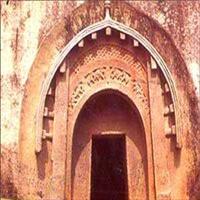 Around 40 kms from Bodhgaya is an unexploited Buddhist site not many are aware of. The hills of Barabar and the Nagarjuni are now important archeological sites. Here one can find seven rock cut caves. Out of the seven caves four are located on the hill of Barabar. Most probably built during the time of Mauryan emperor Ashoka; these caves are carved out of solid rocks which bear details of the life of Buddha. The caves consist of temples and sanctuaries carved out of huge granite outcrops and are designed to look as if they have been made of wood.The four caves have names each and are different in their own way.\r\nThe Lomas Rishi Cave, which is sculpted to resemble lattice screens, is the first available example of the famous Buddhist Chaitya Arch style in India. The entrance is in Egyptian form and only walls of the outer rooms are polished.\r\nThe Sudama Cave, known in ancient times as Nigoha Kubha or Banyan Tree Cave. It is made during the 2nd century B.C. The cave has two chambers and the interiors are have highly polished surfaces.\r\nThe Karan Chopar, a single-chamber-structure with a vaulted roof and simple opening also carved out during the same time has an inscription saying the name of the cave to be Supriya cave.\r\nThe Vishva Zopari Cave is the last two chambered cave also carved around the same time. \r\n\r\nThe Nagarjuni hills have the rest of three caves namely; \r\nThe Gopi Cave which is the most important and has a number of inscriptions on it. A number of inscriptions have been found here. It is believed that in the middle of 19th century, some Islamic saints used to live in these caves. The other two caves are the Vapuiyaka Kubha and the Vedathika Kubha.
Around 40 kms from Bodhgaya is an unexploited Buddhist site not many are aware of. The hills of Barabar and the Nagarjuni are now important archeological sites. Here one can find seven rock cut caves. Out of the seven caves four are located on the hill of Barabar. Most probably built during the time of Mauryan emperor Ashoka; these caves are carved out of solid rocks which bear details of the life of Buddha. The caves consist of temples and sanctuaries carved out of huge granite outcrops and are designed to look as if they have been made of wood.The four caves have names each and are different in their own way.\r\nThe Lomas Rishi Cave, which is sculpted to resemble lattice screens, is the first available example of the famous Buddhist Chaitya Arch style in India. The entrance is in Egyptian form and only walls of the outer rooms are polished.\r\nThe Sudama Cave, known in ancient times as Nigoha Kubha or Banyan Tree Cave. It is made during the 2nd century B.C. The cave has two chambers and the interiors are have highly polished surfaces.\r\nThe Karan Chopar, a single-chamber-structure with a vaulted roof and simple opening also carved out during the same time has an inscription saying the name of the cave to be Supriya cave.\r\nThe Vishva Zopari Cave is the last two chambered cave also carved around the same time. \r\n\r\nThe Nagarjuni hills have the rest of three caves namely; \r\nThe Gopi Cave which is the most important and has a number of inscriptions on it. A number of inscriptions have been found here. It is believed that in the middle of 19th century, some Islamic saints used to live in these caves. The other two caves are the Vapuiyaka Kubha and the Vedathika Kubha.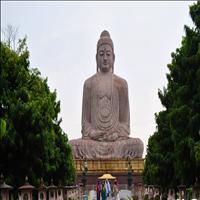 Apart from the main temple of Bodhgaya, there are many temples and monasteries built in various architectural styles. These monasteries usually patronized by foreign countries' Buddhist organizations such as Japan, Korea and China, are the main centres for promotion of Buddhist studies. Today the small town of Bodhgaya is full of many such monasteries which bring people from far and wide to take classes in Buddhism.
Apart from the main temple of Bodhgaya, there are many temples and monasteries built in various architectural styles. These monasteries usually patronized by foreign countries' Buddhist organizations such as Japan, Korea and China, are the main centres for promotion of Buddhist studies. Today the small town of Bodhgaya is full of many such monasteries which bring people from far and wide to take classes in Buddhism.Buddhist Pilgrimage Tour of India / PI-0129 (12 Days / 11 Nights)
Mumbai-Aurangabad-Mumbai-Bhopal-Agra-Varanasi-Bodhgaya-Rajgir-Nalanda-Patna-Delhi
From the Stupa of Sanchi to the ruins of Nalanda and the ultimate caves of Ellora and Ajanta; Buddha's preachings reached all over in India through the art form. This tour takes you from the Ajanta caves which were created nearly thousand years after the nirwana of Lord Buddha to the place where he attained his enlightenment.
Detailed Itinerary
Day 1 : Mumbai
Day 2 : Mumbai - Aurangabad
Day 3 : Aurangabad
Day 4 : Aurangabad-Mumbai-Bhopal
Day 5 : Bhopal
Day 6 : Bhopal - Agra
Day 7 : Agra - Varanasi
Day 8 : Varanasi
Day 9 : Varanasi - Bodhgaya
Day 10 : Bodhgaya
Day 11 : Bodhgaya-Rajgir-Nalanda-Patna
Day 12 : Patna-Delhi
Mumbai-Aurangabad-Mumbai-Bhopal-Agra-Varanasi-Bodhgaya-Rajgir-Nalanda-Patna-Delhi
From the Stupa of Sanchi to the ruins of Nalanda and the ultimate caves of Ellora and Ajanta; Buddha's preachings reached all over in India through the art form. This tour takes you from the Ajanta caves which were created nearly thousand years after the nirwana of Lord Buddha to the place where he attained his enlightenment.
Detailed Itinerary
Day 1 : Mumbai
Day 2 : Mumbai - Aurangabad
Day 3 : Aurangabad
Day 4 : Aurangabad-Mumbai-Bhopal
Day 5 : Bhopal
Day 6 : Bhopal - Agra
Day 7 : Agra - Varanasi
Day 8 : Varanasi
Day 9 : Varanasi - Bodhgaya
Day 10 : Bodhgaya
Day 11 : Bodhgaya-Rajgir-Nalanda-Patna
Day 12 : Patna-Delhi
India Nepal Buddhist tour from Kolkata / PC-564 (11 Days / 10 Nights)
Kolkata-Gaya-Rajgir-Nalanda-Bodhgaya-Varanasi-Agra-Delhi-Kathmandu-Pokhra-Bhaktapur-Kathmandu
Starting from Kolkata, this trip is a Buddhist pilgrimage tour that takes you across some of the most revered Buddhsist spots in India Nepal area. Whether it’s the sacred Gaya or the historic Nalanda or the spiritual Varanasi or the revered Bhaktapur, the trip covers the spots that act as important landmarks in the Buddhist culture and tradition.
Detailed Itinerary
Day 1 : Kolkata
Day 2 : Kolkata-Gaya
Day 3 : Gaya-Rajgir-Nalanda-Bodhgaya
Day 4 : Bodhgaya-Varanasi
Day 5 : Varanasi-Agra
Day 6 : Agra
Day 7 : Agra-Delhi-Kathmandu
Day 8 : Kathmandu-Pokhra
Day 9 : Pokhra
Day 10 : Pokhra-Bhaktapur
Day 11 : Bhaktapur-Kathmandu
Kolkata-Gaya-Rajgir-Nalanda-Bodhgaya-Varanasi-Agra-Delhi-Kathmandu-Pokhra-Bhaktapur-Kathmandu
Starting from Kolkata, this trip is a Buddhist pilgrimage tour that takes you across some of the most revered Buddhsist spots in India Nepal area. Whether it’s the sacred Gaya or the historic Nalanda or the spiritual Varanasi or the revered Bhaktapur, the trip covers the spots that act as important landmarks in the Buddhist culture and tradition.
Detailed Itinerary
Day 1 : Kolkata
Day 2 : Kolkata-Gaya
Day 3 : Gaya-Rajgir-Nalanda-Bodhgaya
Day 4 : Bodhgaya-Varanasi
Day 5 : Varanasi-Agra
Day 6 : Agra
Day 7 : Agra-Delhi-Kathmandu
Day 8 : Kathmandu-Pokhra
Day 9 : Pokhra
Day 10 : Pokhra-Bhaktapur
Day 11 : Bhaktapur-Kathmandu
BUUDHA S FOOTSTEPS WITH SONEPUR MELA / PC-599 (13 Days / 12 Nights)
Delhi-Lucknow-Sravasti-Lumbini-Kushinagar-Varanasi-Patna-Sonepur-Patna-Sonepur-Patna-Nalanda-Rajgir-Bodhgaya-Varanasi-Delhi
Sonepur Mela starts in November and lasts for next 15 days to one month every year. It draws more than 600,000 visitors to the Sonepur. One of the major attractions of the fair is the sight of scores of elephants that are beautifully decorated and lined up for sale. This is the only place in India or probably in the world where largest number of elephants are traded at one place. The buyers are mainly government forest department officials. You may even find the trading of large number of horses, goats, buffaloes, donkeys, ponies and dogs etc. along with elephants and other household cattle. In his very first sermon Lord Buddha put forth the Middle Way, the Four Noble Truths, and the Eightfold Path - the message spread rapidly, penetrating caste and class barriers; today Buddhism is a way of life in large parts of the world, its message of peace and tolerance speaks to us all. Buddha preached that the way to salvation is not dependent on God but on understanding the way things really are for all living beings subject to desire. We take you on a journey to places associated with important events in Buddha's life. Prince Siddhartha was born at Lumbini, became Buddha, the Enlightened One, at Bodhgaya, gave his first sermon at Sarnath, lived the greater part of his monastic life in Sravasti, and attained Nirvana at Kushinagar.
Detailed Itinerary
Day 1 : Delhi
Day 2 : Delhi
Day 3 : Delhi-Lucknow-Sravasti
Day 4 : Sravasti-Lumbini
Day 5 : Lumbini-Kushinagar
Day 6 : Kushinagar-Varanasi-Patna
Day 7 : Patna-Sonepur-Patna
Day 8 : Patna-Sonepur-Patna
Day 9 : Patna-Nalanda-Rajgir-Bodhgaya
Day 10 : Bodhgaya
Day 11 : Bodhgaya-Varanasi
Day 12 : Varanasi-Delhi
Day 13 : Delhi
Delhi-Lucknow-Sravasti-Lumbini-Kushinagar-Varanasi-Patna-Sonepur-Patna-Sonepur-Patna-Nalanda-Rajgir-Bodhgaya-Varanasi-Delhi
Sonepur Mela starts in November and lasts for next 15 days to one month every year. It draws more than 600,000 visitors to the Sonepur. One of the major attractions of the fair is the sight of scores of elephants that are beautifully decorated and lined up for sale. This is the only place in India or probably in the world where largest number of elephants are traded at one place. The buyers are mainly government forest department officials. You may even find the trading of large number of horses, goats, buffaloes, donkeys, ponies and dogs etc. along with elephants and other household cattle. In his very first sermon Lord Buddha put forth the Middle Way, the Four Noble Truths, and the Eightfold Path - the message spread rapidly, penetrating caste and class barriers; today Buddhism is a way of life in large parts of the world, its message of peace and tolerance speaks to us all. Buddha preached that the way to salvation is not dependent on God but on understanding the way things really are for all living beings subject to desire. We take you on a journey to places associated with important events in Buddha's life. Prince Siddhartha was born at Lumbini, became Buddha, the Enlightened One, at Bodhgaya, gave his first sermon at Sarnath, lived the greater part of his monastic life in Sravasti, and attained Nirvana at Kushinagar.
Detailed Itinerary
Day 1 : Delhi
Day 2 : Delhi
Day 3 : Delhi-Lucknow-Sravasti
Day 4 : Sravasti-Lumbini
Day 5 : Lumbini-Kushinagar
Day 6 : Kushinagar-Varanasi-Patna
Day 7 : Patna-Sonepur-Patna
Day 8 : Patna-Sonepur-Patna
Day 9 : Patna-Nalanda-Rajgir-Bodhgaya
Day 10 : Bodhgaya
Day 11 : Bodhgaya-Varanasi
Day 12 : Varanasi-Delhi
Day 13 : Delhi
In Search of Buddha in India / PI-0120 (12 Days / 11 Nights)
Delhi-Agra-Lucknow-Sravasti-Lumbini-Kushinagar-Patna-Rajgir-Bodhgaya-Varanasi-Delhi
Walk along the steps of Lord Buddha as you traverse through his steps when he left the luxuries of life in search of the eternal truth. This trip takes you along on an enchanting journey that goes across all the main Buddhist destinations including Sravasti, Lumbini, Bodhgaya, Rajgir and the spiritual pilgrimage city of Varanasi.
Detailed Itinerary
Day 1 : Delhi
Day 2 : Delhi-Agra
Day 3 : Agra-Lucknow
Day 4 : Lucknow-Sravasti
Day 5 : Sravasti - Lumbini
Day 6 : Lumbini - Kushinagar
Day 7 : Kushinagar - Patna
Day 8 : Patna-Rajgir-Bodhgaya
Day 9 : Bodhgaya
Day 10 : Bodhgaya-Varanasi
Day 11 : Varanasi - Delhi
Day 12 : Delhi
Delhi-Agra-Lucknow-Sravasti-Lumbini-Kushinagar-Patna-Rajgir-Bodhgaya-Varanasi-Delhi
Walk along the steps of Lord Buddha as you traverse through his steps when he left the luxuries of life in search of the eternal truth. This trip takes you along on an enchanting journey that goes across all the main Buddhist destinations including Sravasti, Lumbini, Bodhgaya, Rajgir and the spiritual pilgrimage city of Varanasi.
Detailed Itinerary
Day 1 : Delhi
Day 2 : Delhi-Agra
Day 3 : Agra-Lucknow
Day 4 : Lucknow-Sravasti
Day 5 : Sravasti - Lumbini
Day 6 : Lumbini - Kushinagar
Day 7 : Kushinagar - Patna
Day 8 : Patna-Rajgir-Bodhgaya
Day 9 : Bodhgaya
Day 10 : Bodhgaya-Varanasi
Day 11 : Varanasi - Delhi
Day 12 : Delhi
Bodhgaya, India Tours

